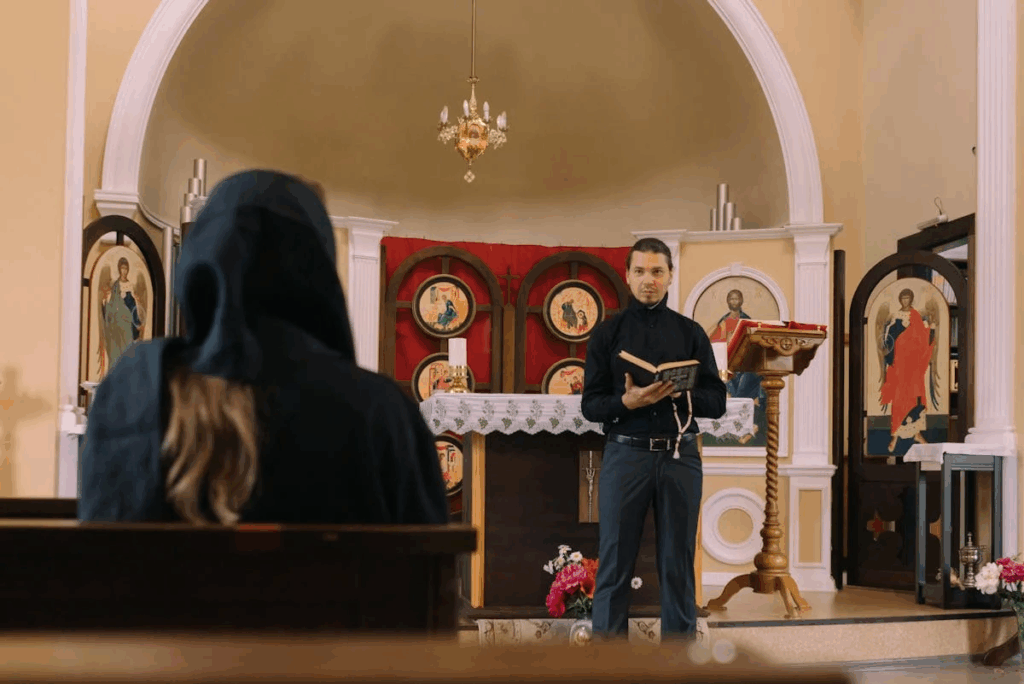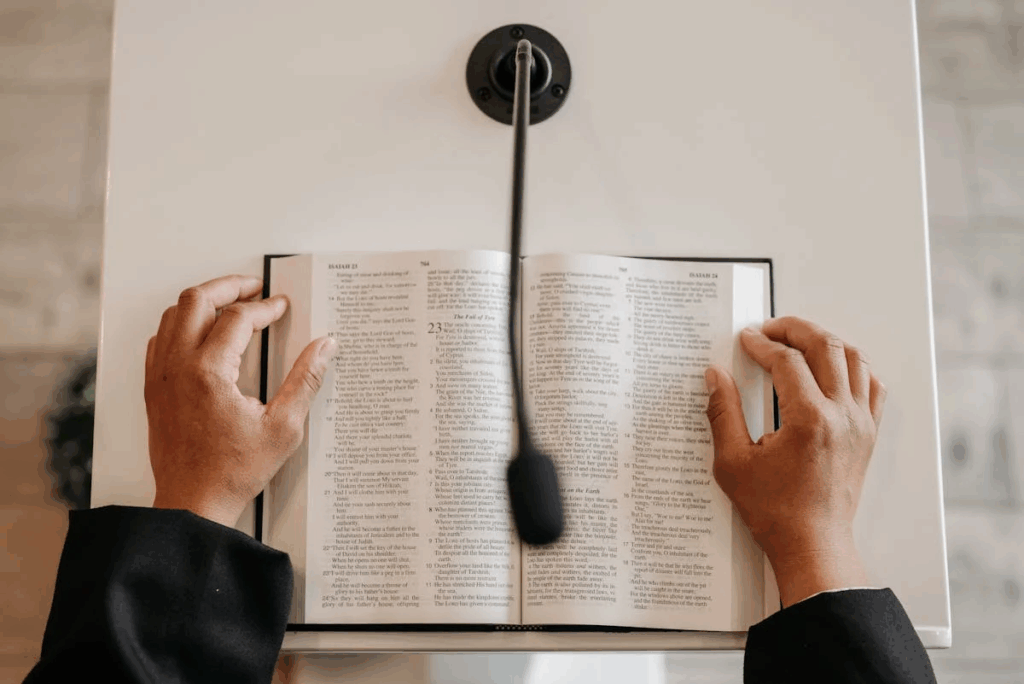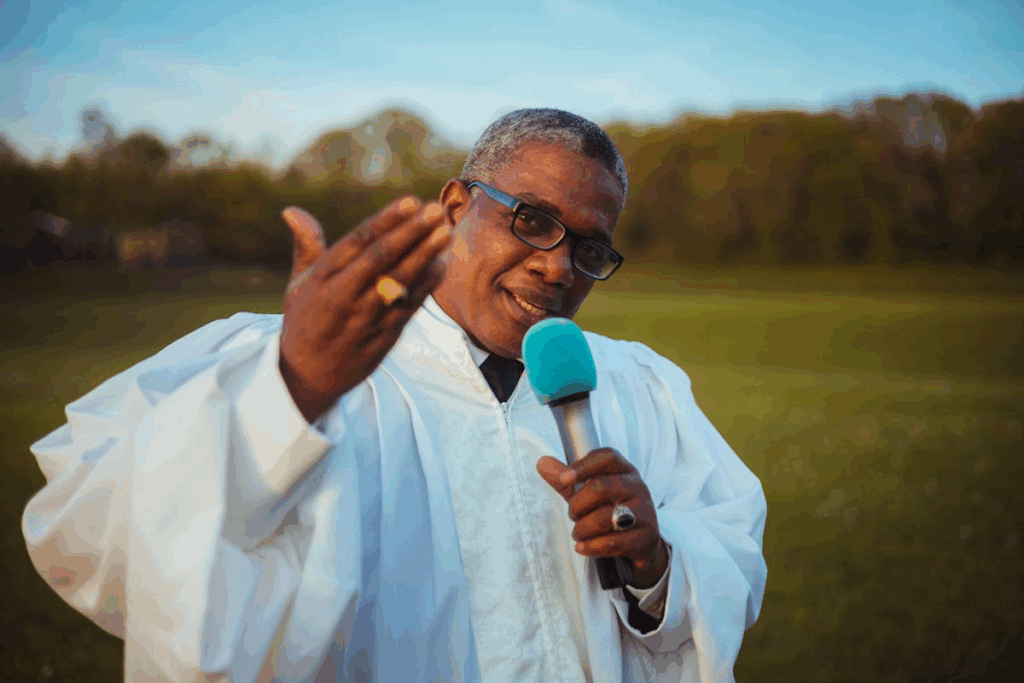The church needs to realise that the Western world has dramatically shifted. It has gone from a Central Culture to a Wide Margin Culture. This means that the way we do church is not the best and most missional, biblical, and disciple-making way of doing church. We have looked at 4 steps in becoming a Wide Margin Church. In this and the next session we will deal with step 5, which will be another drastic change.
We will be zooming into the idea of teaching and discipling. Because we have abolished the idea of the clergy, we are left with another problem. People inevitably ask this next question :
“If you don’t have Clergy or a Bishop or Ordained Priests, then who is going to preach?”
It’s this thing called “preaching” that is a major part of church. And it has actually got caught up in the way and style that we have done church for over 1000 years.

So let’s have a closer look at what exactly is “preaching” and then show an alternative way that makes more sense of the way that the world is run today.
First we will give a basic outline of what most people think of when they think of “preaching”
Preaching is Teaching
It is a spot in the service where teaching happens. It can vary from a few minutes to even a couple of hours. It’s a time where everyone teaching happen through the act of preaching. It is viewed by many as the most important element of the service, because this is the time where God primarily communicates to us through the preaching.
Preaching is Monological
Generally preaching is done coming from one person. It is a monologue. The person preaching is talking to you, or lecturing. There may be some smatterings of dialoguing with the audience, or some questions, but primarily it is monological in nature.
Preaching is Exegeting
The point of preaching is to exegete, to expound the Scriptures. It will preach a text from the Bible with everyone listening and understanding the passage better. The point of preaching is that it is to be Biblical in its content. It is not just a time of chatting or talking about anything. You are to exegete the Bible.
One of the uphill battles with preaching is due to its monological style. People struggle to listen to one person for a long time.
Increasingly preachers will add more illustrations and stories into their preaching to help retain the attention of the audience. Some preachers may actually give little to no Scripture and mostly talk about Self-Help information. All of this, I believe, is due to monological exegetical preaching being hard to listen to, hence the preachers try to add some entertainment into it.

Well, how did this act of “preaching” happen in the church? Here’s a few reasons:
Clergy were seen as Gatekeepers to the truth
A certain amount of people were seen as knowledgeable in the church and increasingly all forms of “teaching” started to funnel through them. They were the gatekeepers to understanding the Bible, which started to be done through the practice of preaching.
Laity were uneducated and without access to the Scriptures
It has only been the last 100 years where most people have the ability to read and write. Back in the early church only a select few could do that. Also, the Scriptures were not something that everyone had. Therefore, it made more sense for the educated clergy to exegete the Scriptures for the rest. The Bible was seen as a difficult dangerous book, so they were all needed to be taught from it properly.
Preaching arose due to the Clergy/Laity split, making it a more pragmatic way of teaching to a larger group

Because of the lack of knowledge and accessibility, people would flock into larger groups, excacerbating the need of “preaching” to happen. A teaching that was monological in nature made more sense. One preacher could teach 100 people at once. So the size of gatherings tilted to the practice of preaching.
So in summary, preaching made more sense in that cultural setting. It was more of a central culture where people obeyed and listened. They saw the priest as the direct mouth of God. It was like Mount Sinai listening to God through the preacher. It was your main diet of understanding the Scripture.
So that may explain why preaching became prevalent in the body of the church service.
Before we look at an alternative to preaching, there’s a few more preliminary points that need to be made.
1. Preaching is not a Biblical Mandate

Some may say that preaching has to happen in a church gathering. If there is no sermon, then there is no church present. But nowhere in the Bible does it say that someone has to give a “sermon” whenever you meet. We have just gotten use to thinking that that’s what a church service must have.
Now preaching sermons can be very helpful. It can be pragmatic and practical. But it’s not a Biblical mandate.
2. Preaching is one way of Teaching

Some may push back and think that if a church gathering does not have preaching, then there is no teaching. They have confused the two. Preaching is teaching but teaching is not only preaching. There are other ways of teaching.
This actually can cloud our way of reading the Bible because when we see passages that say “teach the people”, we think, “preach at the people”.
But we are to “teach one another”. That does not make sense with the modern way of preaching monologically. So there are other forms of teaching that a church can adopt. Preaching is only just one of the ways.
3. Preaching still has a place

Neither hear me say that preaching is wrong and shouldn’t be done. We should swing too far and say “preaching is the only way” or say “preaching is avoided”. There is a place for it.
But I will say this : Preaching shouldn’t be the primary way of teaching. It has its place, but don’t make it the jewel of church.
Think of it like a goal celebration. A local sports team scores a goal and then the team does a little dance together celebrating it. But the bulk of their energies and time has gone into the fundamentals of the game : running, passing, shooting, defending. There’s a place for goal celebrations, but that should not be the primary thing a team focusing all their energy on.
Much like a church, preaching has its place, but other forms of teaching have more value in building up the body of Christ.
4. Preaching is Reaching rather than Teaching

Here’s the interesting thing. The Bible does talk about preaching but it’s not in the way that you think. Primarily it was done “outside the church”. Preaching was envangelising. Calling out the Good News to people. Much of the Book of Acts has preaching, but it’s done to the non-believer rather than the believer. Yes, it is a form of teaching but it was more about “reaching”, getting people to convert. Warning them.
And then, when people did respond to the preaching, the early church would set them up as a church gathering, which would then have various other styles of teaching rather than preaching. Why not preaching? Because preaching was more about reaching than teaching. These people have been preached to already, and they have been “reached”, and now they must be “taught”, which did not require preaching.
Now this is a big problem for the modern-day church because we are doing the opposite of this practice. We are even muddling up what preaching was supposed to do and who it was primarily for.
We are doing “preaching” inside the church,
rather than outside.
Even more than that, our “preaching” is more “teaching” than “reaching”. Some churches do see the sermon as a big evangelistic gospel call, but the majority are teaching to the believers in a preaching way.
5. Preaching isn’t Monological

Again, this is another mistake that we have made. When we hear the word “preach” we think of one person talking all the time in a monological way. Rather, the word in the Bible is more dialogical in its nature. Preaching had a more dynamic approach. It was not just you speaking but it was you asking questions, taking questions, getting responses from others, discussing with people.
We see snippets of this in the ministry of Jesus. He would “preach” in response to a question someone had. He would push back on someone’s question, he would see what they thought. Yes there were forms of Jesus talking a lot and giving stories, but it has some dialogue aspects to it. It was more of a back-and-forth way of teaching
As I said previously, “preaching” was more about “reaching”. You were trying to win the person over. Part of that is listening to them, getting their attention, seeing if they understand what you are saying. Preaching was not primarily monological.
So when you see the word “preaching” don’t default to a picture of one guy talking monologically. It may be that at times, but mostly it was not. Even when Paul reasoned in the Hall of Tyrannus for 2 years, it was probably not monological sermons. Or even when Paul was in the upper room talking to the church and the poor lad fell out the window. We are assuming that Paul is the only one talking all the time. It was probably more the case that he was talking and answering questions from people and prolonging the night in that way.
So, with all that in mind, how does “teaching” work in a Wide Margin Church? What works well in the cultural field that we are in?
What is a way of doing teaching that is both “missional” and “biblical”?
And, most importantly, if we are to make disciples, what way of teaching in church promotes that the best?
Step 5 :
From Monologue Teaching
to Dialogue Teaching

What does that look like in the Wide Margin Church? Part 2 will answer that.